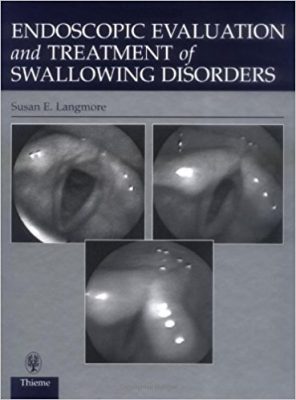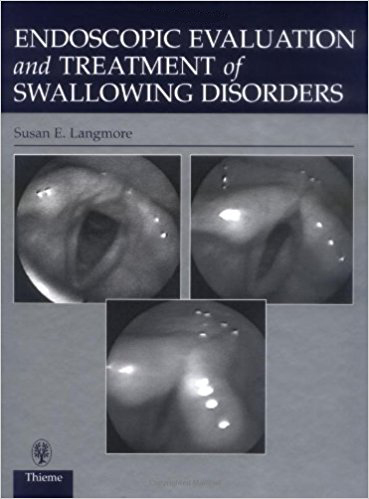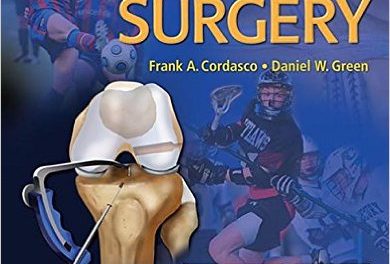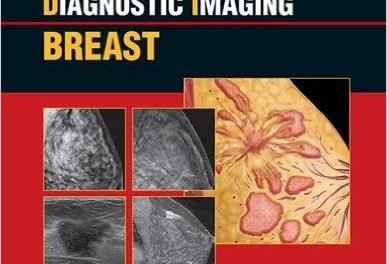 Editor: Susan E. Langmore, PhD
Editor: Susan E. Langmore, PhD
Publisher: Thieme – 263 pages
Book Review by: Nano Khilnani
Dysphagia is the medical term for difficulty in swallowing. It consists of two Greek words: ‘dys’ meaning “disordered” and ‘phag’ meaning “eat.” It may be a sensation in a person that makes it difficult for him or her to pass solid food or liquid from the mouth to the stomach. It may be a lack of sensation in the pharynx or various other inadequacies that causes dysphagia.
This book is about the various disorders that cause and / or contribute to the difficulty of swallowing. It is mainly about evaluation of the various specific disorders in a number of different types of patients, but it is also about their treatment through surgery or other means.
One of the primary diagnostic methods for dysphagia is Fiberoptic Endoscopic Evaluation of Swallowing, or FEES for short. This acronym is part of the titles of four chapters listed below, which gives you a sense of how extensively this diagnostic method is used.
Fourteen specialists including the editor, in areas such as laryngology, otolaryngology – head and neck surgery, speech and language pathology, gastroenterology, and related areas, from all over the United States, authored the 15 chapters of this book, which we list below to provide you an overview of its contents:
- The Role of Endoscopy in the Evaluation and Treatment of Swallowing Disorders
- Normal Anatomy and Physiology of the Nose, the Pharynx, and the Larynx
- Normal Swallowing: The Endoscopic Perspective
- Endoscopic Mechanics and Technique
- Endoscopic Procedures to Evaluate Oropharyngeal Swallowing
- Scoring a FEES Examination
- Interpretation of Findings: A Model of Disordered Swallowing
- Otolaryngologic Manifestations of Gastroesophageal Reflux Disease
- Use of Endoscopy in the Treatment and Management of Dysphagia
- Use of FEES to Assess and Manage Patients with Head and Neck Cancer
- Use of FEES to Assess and Manage Patients with Tracheotomy
- Use of FEES to Assess and Manage Nursing Home Residents
- Use of FEES to Assess and Manage Pediatric Patients
- The Safety of Endoscopic Swallowing Evaluations
- Clinical Practice Guidelines and Treatment Outcomes in Dysphagia: Role of Endoscopy
This book has been written for clinicians, researcher, and students in a number of fields, including otolaryngology and speech-language pathology (SLP).
Through this book, you can:
- Get an overview of normal and abnormal swallowing
- Learn more about the role of endoscopy in the assessment and management of patients with oropharyngeal dysphagia, particularly how much endoscopy can reveal, especially to those who assume that it is of limited use, and that it is inferior to fluoroscopy. .
- Discover that endoscopy has many strengths and unique features compared with other imaging tools, from the dramatic view it provides the examiner, to the multitude of unique findings, to the practical nature of the procedure.
- Study how various types of patients are affected differently with dysphagia
- Know about other tools that complement endoscopy
An important chapter in this book is chapter 4, Endoscopic Mechanics and Technique, authored by Joseph Murray. He has organized his materials as shown below, and disscusses the following topics:
Introductory paragraphs
- Mechanics and Construction of the Flexible Laryngoscope
- Light source
- Chip camera
- Choosing a Fiberoptic Laryngoscope
- Sterilization and Disinfection
- Handling the Endoscope
- Skills required
- Handling the scope
- Controlling the endoscope.
- Imaging the Swallow Using Flexible Endoscopy
- Imaging the swallow
- Velar elevation
- Observing abnormal velar elevation
- Effect of velar elevation on scope position and view
- Base of tongue
- Clearing the clouded objective lens
- Viewing the salient findings
- Patient Comfort
- Topical anesthetic
- Conclusions
- References
- Appendix 4-1: Companies that Manufacture or Distribute Products Used in the FEES Procedure
While we found about 30 books on swallowing disorders on Amazon, almost all of them were on cooking or eating foods or liquids that are easy to swallow, and no more than six were medical in nature. Dysphagia then is a rare subject in medicine.
This book – Endoscopic Evaluation of Swallowing Disorders – fills that need for such information, providing extensive coverage of this medical ailment in terms of evaluating its severity and providing appropriate treatment for it This is also an authoritative book on the subject with 14 specialists contributing to it.
Editor:
Susan E. Langmore, MA, PhD is Clinical Professor of Speech Pathology in the Department of Neurology at University of California School of Medicine – San Francisco, in San Francisco, California.
Contributors:
Jonathan F. Aviv, MD, FACS
Sarah T. Kaplan, MS, CCC-SLP
Susan E. Langmore, MA, PhD
Steven B. Leder, PhD
Dana Thompson Link, MD, MS
Timothy M. McCulloch, MD
Claire Kane Miller, MS
Joseph T. Murray, MA
Cathy Pelletier, MS, CCC-SLP
Satish S.C. Rao, MD, PhD
Colin D. Rudolph, MD, PhD
Clarence T. Sasaki, MD
Douglas J. Van Daele, MD
Paul Willging, MD







